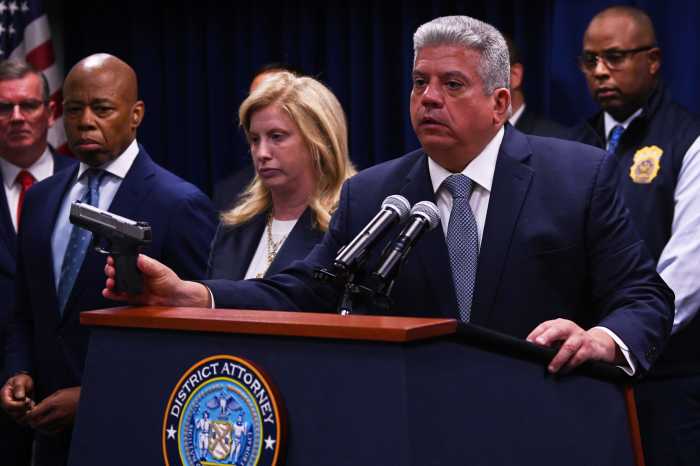
A large percentage of New Yorkers are still uninsured, with that number even higher in some neighborhoods, like Sunnyside and Bushwick, according to a report released Monday by City Comptroller Scott Stringer.
The report shows that in some city neighborhoods more than 22% of residents don’t have insurance.
“While our nation has made real progress with expanding access to real affordable health care to more Americans, it’s unacceptable that Sunnyside and Woodside have the highest rates of people without health insurance in New York City,” said City Council Majority Leader Jimmy Van Bramer, whose district includes those neighborhoods, in a statement. “Working with local nonprofit organizations and enrollment groups, we hope to do extensive outreach to the district’s immigrant communities and younger populations to help address the real need residents within our district have.”
The data from the 2014 American Community Survey was conducted by the Census Bureau and comes about a week after the Nov. 1 start of the Affordable Care Act open enrollment period.
In Sunnyside and Woodside, Queens, 22.5% of residents were uninsured last year, the highest percentage in the city. Jackson Heights, Elmhurst, Corona, and Bushwick also had at least 22% of residents as uninsured.
Van Bramer said he is working to organize a health insurance fair to help people enroll in the next few months.
In contrast, the Upper West Side and Upper East Side were the areas with the fewest uninsured people — only 4% of residents — in 2014.
A representative for Councilmember Julissa Ferreras-Copeland — who represents Elmhurst, East Elmhurst, Corona and Jackson Heights — said she tries to combat the low number of insured residents by inviting health insurance representatives to every community event she sponsors.
“Residents of Corona face many challenges when it comes to obtaining health care and insurance: over 60% are foreign born which commonly means there is a language barrier; over 50% are low-income and cannot always afford their own health insurance; and many work jobs that are off the books so they don’t have the opportunity to get insurance through an employer,” Ferreras-Copeland said in a statement. “In addition, many undocumented individuals are fearful of sharing any of their information with the City, the Census or any entity, even if that is an insurance company.”
Citywide, more than 962,800 New Yorkers didn’t have health care in 2014, or about 11.2% of the city, according to the data. That number has decreased since 2010, when 14.8% of city residents were uninsured.
The most significant drop was from 2013 to 2014, when uninsured residents decreased by 2 percentage points and dipped below 1 million uninsured residents for the first time in five years, according to the data. That year was significant as it was the first year Americans were able to enroll in the Affordable Care Act open marketplace.
Becca Telzak, director of health programs at Make the Road New York, said it is important to focus on outreach for those areas that are still struggling to sign people up for health insurance.
“These communities have large immigrant populations who may not be aware of the fact that they are eligible for health insurance, and are often scared to apply for benefits,” Telzak said in a statement. “It is therefore important to do targeted outreach in these communities through trusted community members and community organizations to ensure that everyone who is eligible, applies for health insurance.”
Stringer, who released the report Monday, said New Yorkers need to be encouraged to enroll in the Affordable Care Act marketplace.
“Close to 1 million New York City residents lack even the most basic health coverage,” Stringer said in a statement. “To ensure the long-term economic future of our city we need to make sure our residents are healthy and well.”































